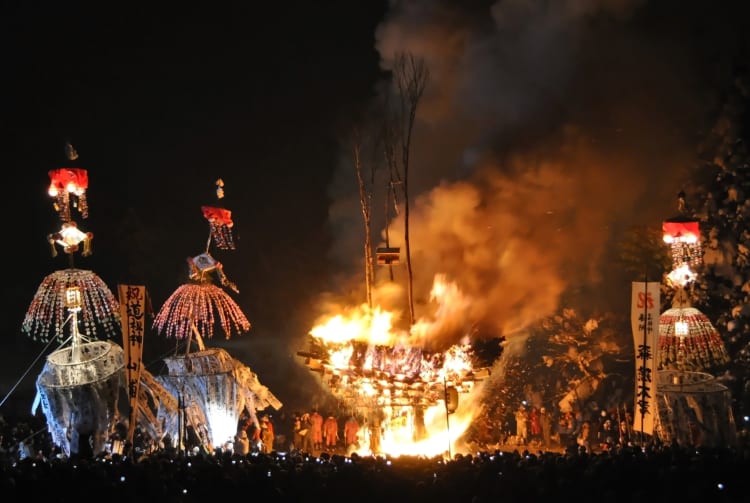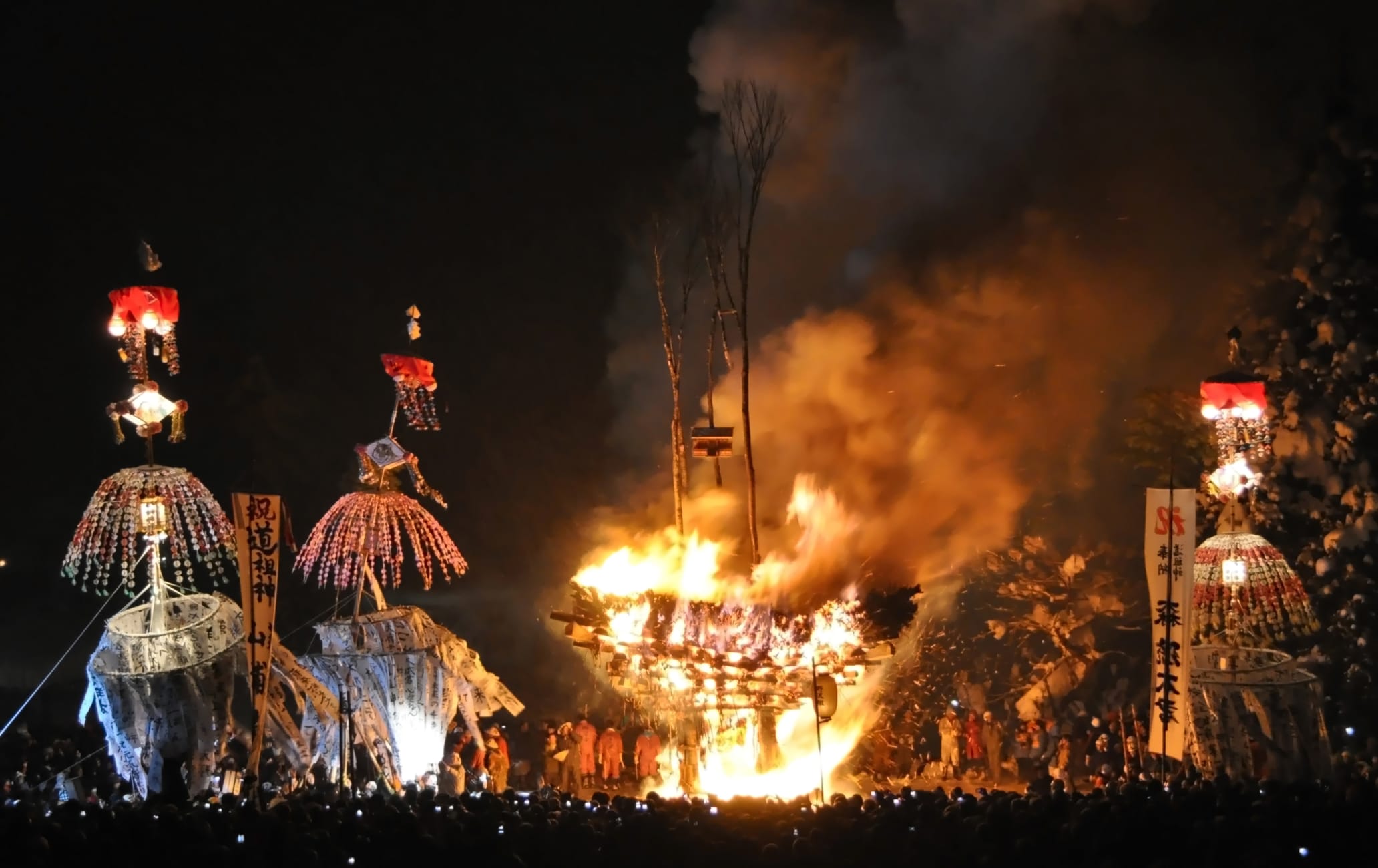A magnificent fire festival for protection against bad luck and prayers for children and a good marriage
The Nozawa Onsen Fire Festival is the most famous festival of Dosojin, a deity in the Hokuriku Shinetsu region, which takes place every winter on January 15. The men of the village, especially those aged 25 and 42, which are considered unlucky years in Japan, play an important role. The flames of the torches they hold light up the night, and a fierce battle ensues.
Large numbers of villagers carry torches and attempt to burn down a temporary shrine called a shaden, while the 25 year-olds defend the structure and the 42 year-olds sing and chant. This festival is meant to celebrate the birth of a family's first child, and pray for their good health, and to pray for a good harvest.
Don't Miss
- Grilled dough pockets with savory fillings called oyaki
How to Get There
The Nagano Snow Shuttle offers a direct connection between Tokyo's airports, Shinjuku Station, and Nozawa (about six hours). It also runs between Nozawa and the Nagano resorts of Hakuba and Shiga Kogen.
Alternatively, take the Hokuriku Shinkansen from Tokyo Station to Iiyama (1 hour 40 minutes) and then the Nozawa Onsen Liner bus (25 minutes). Direct buses are available through the winter from Osaka, Kyoto and Nagoya.
The festival takes place in a square called Dosojinba, about a five-minute walk from the Oyu public bathhouse on the main street.

Bring on the fire
In Japan, the ages of 25 and 42 are considered astrologically unlucky for men. The Nozawa Dosojin Festival combines a rite of passage to protect them with ancient New Year rituals.
In Japanese, the festival is known as Dosojin Matsuri, in honor of the tutelary Dosojin deities it honors. The Dosojin are believed to fend off epidemics and various other misfortunes. They're commonly found carved into stones on roadsides and borders throughout central Japan; in Nozawa Onsen, they appear as two wooden poles painted as a human couple.
The earliest record of the festival in its current form dates to the mid-1800s, but the roots go much further back.

The day before the festivities, around a hundred villagers build a makeshift shrine at the Dosojinba. As the festival begins, the 42-year-olds sit atop the shrine, singing to the Dosojin; the 25-year-olds stand at the bottom, holding ropes attached to the shrine. As the time to start draws near, they chant “Bring on the fire! Bring on the fire!”
In response to their calls, columns of villagers bearing bundled reed torches attack the shrine, doing their best to set it alight. The men holding the ropes have to protect the shrine, whatever comes. One after another the villagers charge, and a battle of sparks and flame ensues.
After the siege, the shrine building is set alight at around 10:00p.m. As the shrine building burns down, the festival comes to an end. The fire burns until the next day, and many people roast and eat rice cakes and other food the next morning, over the remains of the fire. It is said that if you roast and eat rice cakes on this fire, you will live in good health for a whole year without catching a cold.


























































